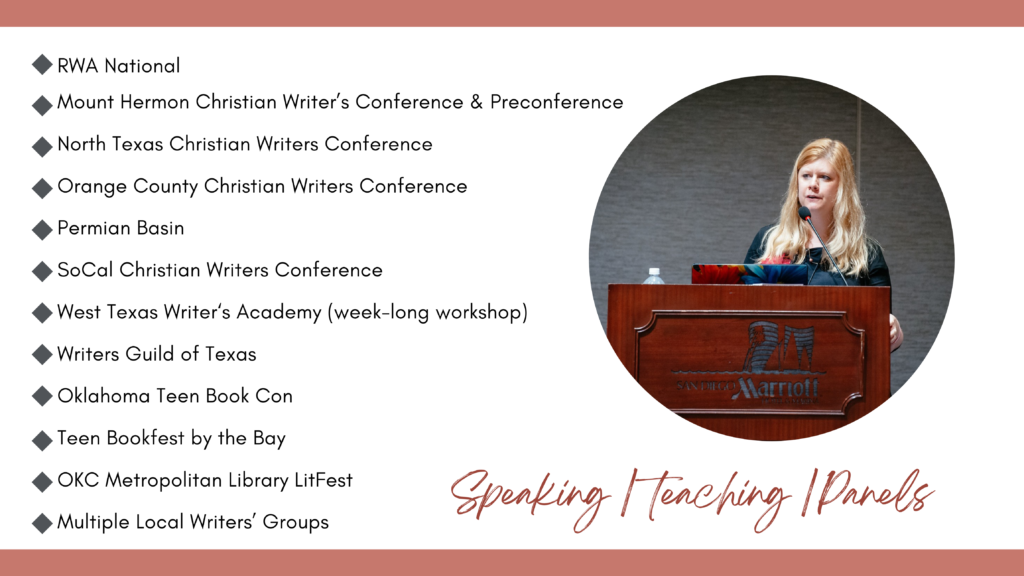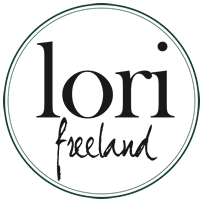Lori Freeland, an encourager at heart, believes everyone has a story to tell. An author, editor, and writing coach, she holds a BA in psychology from The University of Wisconsin and lives in the Dallas area. A regular contributor to Writers in the Storm, former contributor to Crosswalk and former editor for The Christian Pulse and Armonia Publishing, she’s presented multiple workshops at conferences across the country and has experience in developmental and copy edits in various genres of fiction and nonfiction. As a one-on-one writing coach, her goal is to broaden and deepen an author’s storytelling and writing skills. She has experience in both mainstream and inspirational nonfiction and fiction, including children’s books, young adult, adult contemporary, and historical. She writes articles, novels, and everything in between. When she’s not curled up with her husband or dogs drinking too much coffee, she loves to mess with the lives of the imaginary people living in her head.


Dynamic Dialogue: Make—Don’t Break—Your Scene with Dialogue
Dialogue can be the cornerstone for crafting great scenes. Or the wrecking ball that flattens a story. Learn to avoid common dialogue mistakes, weave in subtext, and use punctuation, paragraphing, tags, beats, timing, what isn’t said, action/reaction, and dialogue cues to deepen your story and turn cardboard characters into real people your readers will stick around and get to know.
Demolish Reader Stumbling Blocks Using the Secret of Clarity
Write Tight. Say What You Mean. Be Specific.
Lack of clarity on the page gives an otherwise smooth read a bumpy ride and throws up reader roadblocks. Confusion about what’s happening in a story, unmotivated character actions and reactions, unclear choreography of scene, weak or repetitive writing, and grammar and sentence-structure issues cause readers to stumble.
If we know what to watch for, we can demolish those roadblocks. Learn to use clarity to set the scene, center your characters, and manipulate sentence structure to toss unnecessary words, nix clichés and filter words, use active versus passive voice, and avoid vague words and ideas. Weaving clarity into every scene not only catches readers, but keeps them.
Hook, Line, and Subtext: Using Emotion to Engage Readers
Learn to write “between the lines.” Add depth to your characters, relationships, and scenes using voice descriptions, facial expressions, body language, internal thought, and internal reactions.
Layer Your Scene With 5 Key Elements
As writers, our goal is to take the story playing in our heads and put it on the page. But there’s often a gap between what we imagine and what we actually write down. Learn to be intentional with your words using the 5 basic elements of a scene—action, setting, dialogue, internal thought, and emotion (the subtext of dialogue cues, expressions, body language, and visceral reactions). Discover how to hook and keep your readers in this hands-on workshop. Bring your laptop or a scene to work on.
Frame Your Scene Using Essay Structure
Like an essay has a three-part structure—intro, body, conclusion—a scene has an opening, a middle, and an end that can be used as a frame to keep your scene on track. Openings set the stage, middles move the story forward, and endings hook the reader to turn the page. Knowing what you want that scene to accomplish is your baseline for filling in that frame. Bring your own scene and apply what you learn.
Rev Up Your Writing with Literary Devices
You’ve written your draft, and it’s okay. But you’re not sure how to give it that extra oomph. Never fear, zeugma is here! Gather your quill, your computer, and your curiosity for this fast-paced, fun workshop to learn about little-used literary devices from A to Z.
Show, Don’t Tell: The Three Most Misunderstood Words in a Writer’s Vocabulary
“Show, don’t tell” sounds simple, but what do those three words really mean? Why is showing so important, and is it always bad to tell? How do you know when you’re doing it right? In this practical, hands-on workshop, we’ll take an abstract idea and make it concrete. You’ll have examples to take home and a chance to write some of your own.
The Ins and Outs of Internal Thought
What your characters don’t say is as crucial as what they do say. Internal thought can add depth to your story and amplify your characters or dilute your “wow” moments and water down your words. In this hands-on workshop, discover how internal thought relates to deep POV, dialogue, subtext, tension, pacing, and character likeability, credibility, and motivation. Bring your laptop or some scenes you’d like to work on.
Polish Your Scene with Subtext
Do readers miss what you’re trying to get across? Are your characters and storyline flat? It’s often the subtle additions of emotion that make the most noise. Learn to write “between the lines” and add depth to your characters, their relationships, and the underlying meaning of what’s happening in each scene. Bring your story to life with subtext using dialogue cues, expressions, body language, internal thought, and visceral reactions.
P-O-What???
Are you tired of agents and editors telling you to watch your POV? Do you want to dive deeper into POV? Are you wondering what POV even is, and why you should care? Even if you know that POV stands for “Point of View,” you’ll still love this workshop—even if it’s just for the laughs, interactive experiences, and hands-on examples.
Master Your Manuscript: Catch and Keep Your Reader Using the Secret of Clarity
A few of us write for ourselves. Most of us write for other people. As storytellers, we want to create a mood. Set a tone. Even mold a new world. But sometimes we’re so caught up in the excitement of sharing the magic in our head we forget a reader can only experience what we’ve actually put on the page.
Writing a compelling story requires mastering the craft. But when do you use those writing rules and when do you ditch them? The backbone behind every rule comes down to a simple secret—clarity. Topics and techniques can be applied to articles, short stories, novellas, memoirs, or novels.
- Frame your scene with mood, setting, and purpose.
- Lock into deep POV using scenes that show, not tell.
- Drive tension into dialogue.
- Find your flow. Make your style work for you.
- Demolish reader stumbling blocks.
- Manipulate sentence structure and toss vague and unnecessary words.
- Battle boredom. Nix clichés, filter words, and overused descriptions.
- Plan and execute your perfect pace.
Unleash Your Story: From Ideas to Edits, Write or Remodel Your Novel
Have you always wanted to write a book and weren’t sure how to begin? Or maybe you have a manuscript that just isn’t working? Either way, this class is for you. From planning to polishing, learn how to structure a solid story, create 3D characters, build vivid visuals, set scenes with purpose, and boost your words and sentences from ordinary to extraordinary.
Fiction Mentoring Workshop
Does the blank page cause you anxiety? Do readers sometimes miss what you’re trying to get across? Or is your story just not working? Knowing how to write with purpose is the backbone for great scenes. Once you have great scenes, a great story isn’t far behind. Improve your craft, connect with your readers, and bring your story to life as you learn how to:
- Build strong SCENES using essay structure and layering
- Add EMOTION through subtext and character reactions
- Use the power of POINT OF VIEW
- Craft realistic CHARACTERS
- Write credible internal and external DIALOGUE
This continuing, hands-on workshop is designed for all writing levels.
The Secrets of a Successful Scene: How Great Scenes Become Strong Stories
Did you know that by learning to write solid scenes you’re also learning almost everything you need to know to write a book? And if you can craft those scenes with purpose in deep POV and develop a voice that captivates readers, you can write a great book. In order to engage readers, you need to bring them along for the ride. We can do that using the elements below and more:
Action: Find out why character motivation needs to dictate character action and reaction.
Backstory: Understand how a character’s past drives him toward his future and what to include when.
Conversation: Discover how dialogue and internal thought shape every character interaction.
Description: See why first impressions are crucial.
Emotion: Learn how to make your readers laugh, cry, and worry along with your characters.
This class is designed to deepen your storytelling and writing skills wherever you are in your writing journey. The topics discussed apply to novels, short stories, creative nonfiction, and even memoirs.
Click edit button to change this text.

